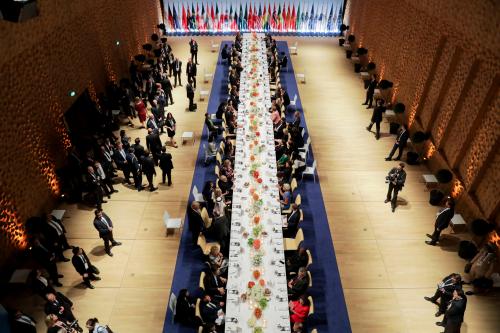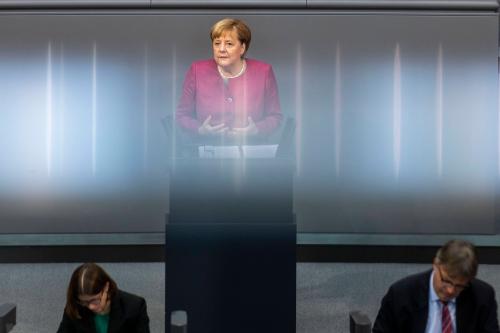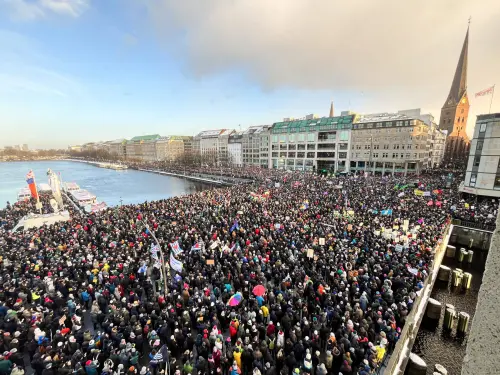Executive Summary
 Countries across the trans-Atlantic alliance are suffering from deep polarization, shifting political landscapes, and doubts about the liberal order. American retrenchment, China’s growing influence, the climate crisis, rising economic inequality, and the coronavirus pandemic are fueling the angst. In response, a new generation of moderate politicians has emerged with a different style of politics that includes hopeful, unifying messaging. Germany’s Green Party, a strong contender to serve in the country’s next government, is part of this trend.
Countries across the trans-Atlantic alliance are suffering from deep polarization, shifting political landscapes, and doubts about the liberal order. American retrenchment, China’s growing influence, the climate crisis, rising economic inequality, and the coronavirus pandemic are fueling the angst. In response, a new generation of moderate politicians has emerged with a different style of politics that includes hopeful, unifying messaging. Germany’s Green Party, a strong contender to serve in the country’s next government, is part of this trend.
Until the coronavirus outbreak, there was a developing narrative in German politics. The long-serving governing coalition — between Chancellor Angela Merkel’s Christian Democratic Union (CDU) and the Social Democratic Party (SPD) — was fading in dynamism. The traditional left/right political divide, embodied in these traditional parties, was being challenged by a liberal/illiberal rift. On one side was the Alternative for Germany (AfD), a far-right populist party that surged in the polls during the 2015 migration crisis. On the other side, the Green Party had evolved from its radical origins in the 1980s to become an appealing moderate force with increasing electoral success. Clear-eyed about the social transformations underway, the Greens have countered the fearmongering of the far right, seized ground from the center left with progressive policies, and developed a constructive approach that emphasizes coalition building and positive rhetoric. Yet the party remains largely untested at the federal level, faces lingering internal divisions, and has limited support in eastern Germany. Its centrist approach also carries political risks.
This paper seeks to provide a comprehensive overview of the Green Party, including its historical evolution, future electoral prospects, and foreign policy views. The Greens bear watching ahead of Germany’s federal elections in autumn 2021 given their potential role in the next government. They can also serve as a case study for Western democracies that are struggling to stabilize the political center. This paper begins by tracking the party’s evolution from the left-wing fringe to the moderate middle. Next, it explores the rising popularity of the Greens in recent years. It considers structural factors in Germany, including the hollowing of the political center, the growth of the far right, and increasing concern about the environment. It also examines how the party changed itself by electing dynamic leaders, strengthening internal cohesion, and advocating a more inclusive approach. Finally, the paper assesses the Green Party’s electoral prospects and its views on foreign policy issues of interest to the trans-Atlantic community.







